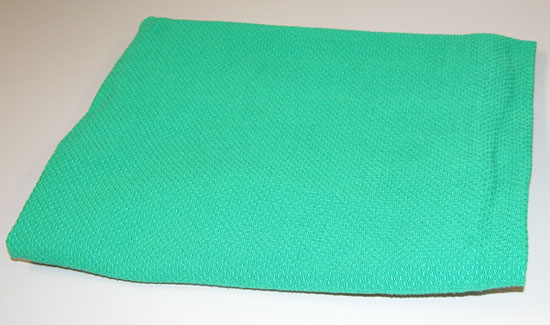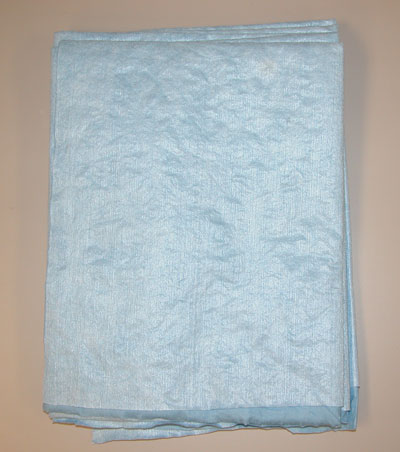Goals
- Isolate surgical site from contaminated areas with an impermeable barrier
- Provide a sterile working area
Draping materials
- ideal barrier material is impermeable, easy to sterilize and economical
- two basic types: Cloth (woven) or Disposable (nonwoven)

Cloth (woven)
- typically cotton muslin
- tightness of weave is measured in threads per square inch
- the higher the number, the tighter the weave and the better the barrier
- 140 threads per square inch: not effective barrier (pore size too big)
- 270 threads per square inch: effective if dry but bacteria can penetrate when wet unless treated with water resistant coating
- reusable
- economical depending on cost of laundering

Disposable (nonwoven)
- made from regenerated cellulose, wood pulp, polyesters, synthetic polymer fibers or combinations
- effectiveness of barrier varies with product
- generally only those reinforced with plastic or polyethylene film are impermeable
- convenient but usually more expensive (depends on labour costs)
Opening packs
- Sterile packs contain surgical drapes, instruments, gowns and gloves
- Sterile packs are double wrapped in cloth to increase storage life
- Only sterile 24 hours if single cloth wrap
- Sterile 3 weeks if double cloth wrap
- sterile as long as wrapping intact (no holes) if sealed in plastic
- Opened by non-sterile person
- Both wraps opened touching only outside so a sterile field is created
- Extras are opened and tossed into center of sterile field without reaching over the field
WHY?Explanation: Prevents bacteria and skin flakes from the person from falling on the sterile field contaminating it
- Once opened, the peripheral 5 cm in contact with a nonsterile surface is considered contaminated as well as anything below the table edge
Draping site
For a surface to remain sterile, it must not be touched by a contaminated surface
Protect your gloves - if they touch a contaminated surface they must be changed
-
-
fold them inside edges of a sterile drape when draping
-
otherwise keep gloves visible
-
-
Avoid shaking the drapes (harder to control edges and creates excess air currents)
-
Keep drapes above your waist (inside surgeon's sterile zone)
-
Don't reach over the table to drape the far side; walk to other side of table to place the drape (can contaminate gown or drape as lean over)
-
Place drapes where they will ultimately lie - do NOT move drape closer to the surgical field as bacteria and dirt from the haired region are pulled toward your sterile field
“Ground” or “square” drapes
-
- generally drapes are applied along each side of a square containing the proposed incision and the immediate surrounding area
- isolates incision area from the unprepped areas
- Drapes should be large enough to cover the animal and table
Slit drape (or laparotomy drape)
-
- Second layer of drapes
- Should provide an effective barrier to fluids (ie. treated with water repellent or plastic reinforced)
- want to see water bead on surface
- Slit in center that is placed over the proposed incision site
- Covers the entire field with a single drape
- additional drapes are applied as necessary to ensure the entire animal and table is covered by two layers of drapes
Draping table
- All the instruments and supplies required for the procedure should be within easy reach
- entire table should be covered
- second layer should be waterproof
- organized so instruments and supplies are quickly available
Options:
- Large instrument table
- rolled close to the patient
- organized so that instruments and supplies are within easy reach
- Mayo stand
- Small movable table that can be moved over surgical field to ensure easy access to instruments
- useful for simple procedures with minimal instruments and supplies
- draping
- covered by “pillow case” to minimize contamination from underneath
- second drape should be waterproof
- covering towel gives stable surface
Sterile field
- peripheral 5 cm edge in contact with a non-sterile surface is considered contaminated because may have touched a nonsterile surface
- anything below the table edges is considered contaminated as good chance may have had contact with a non-sterile surface or a person
- If you can't see it → it should be considered contaminated


